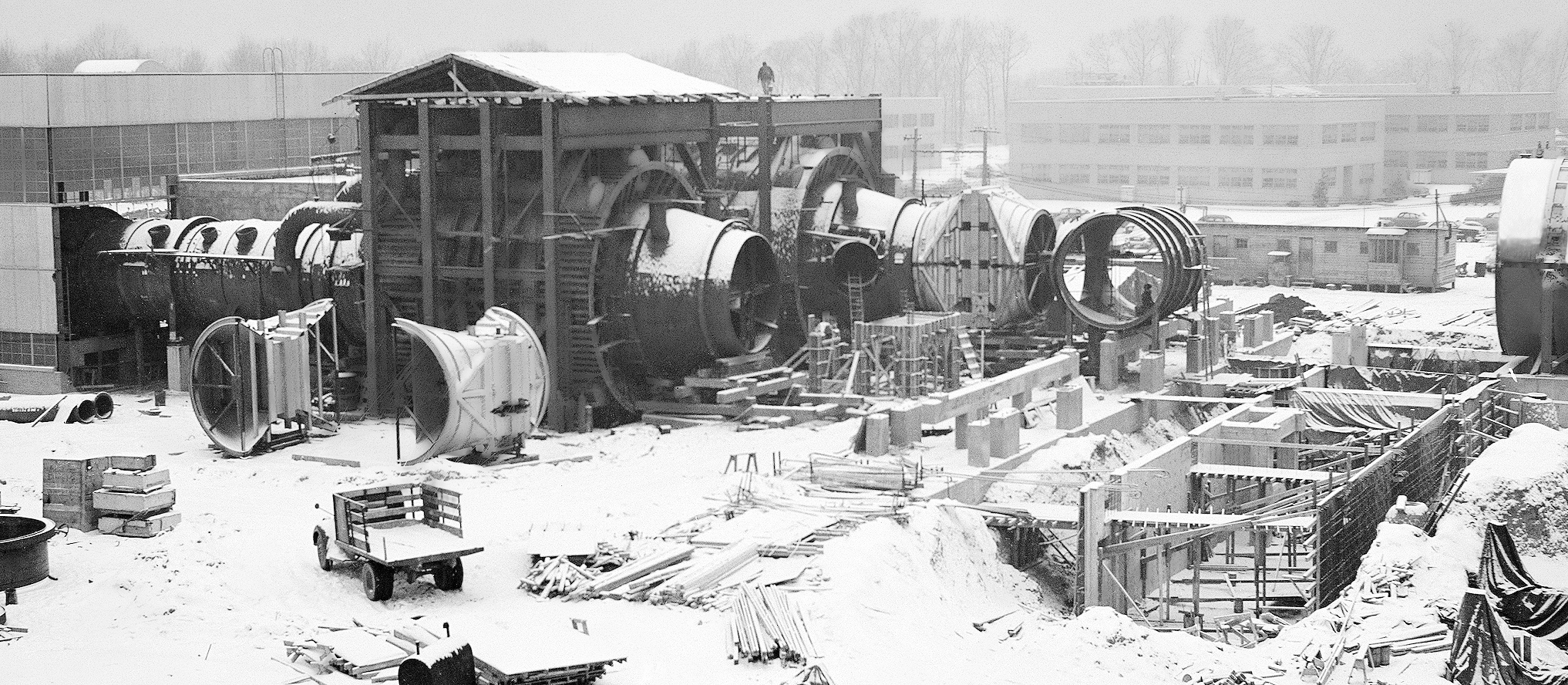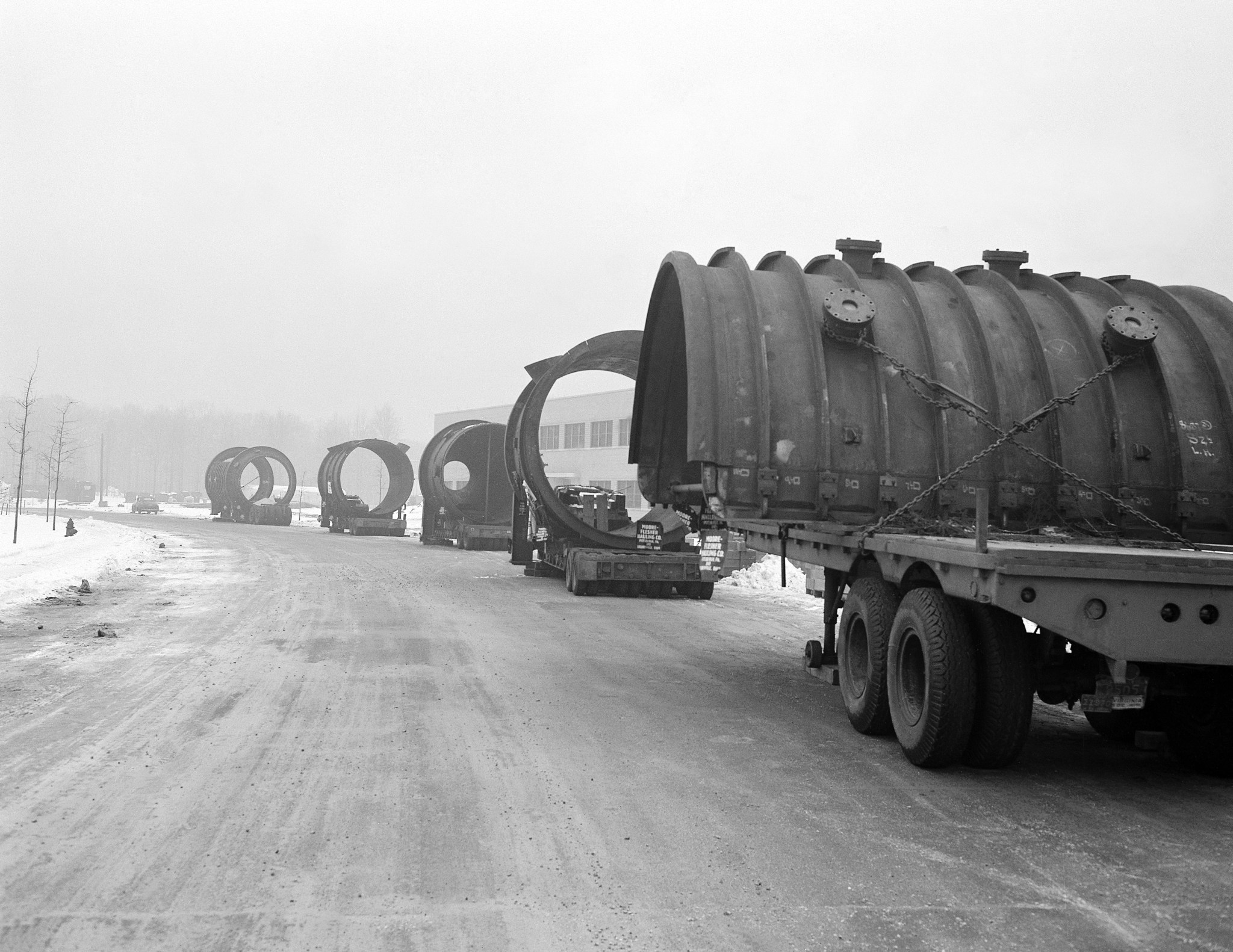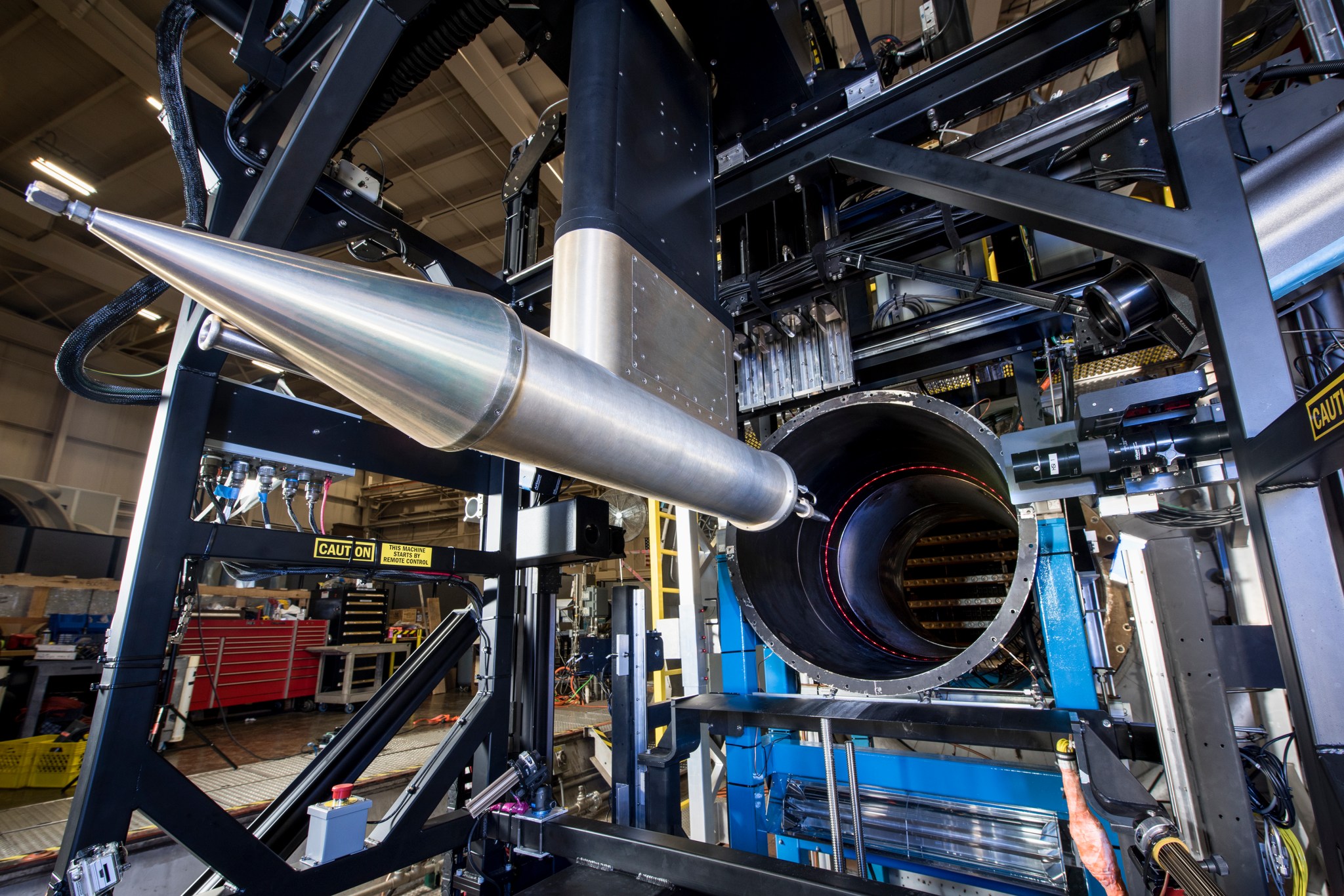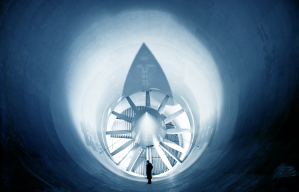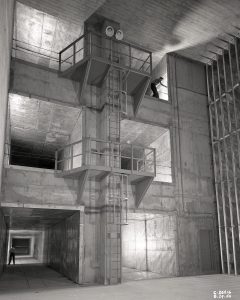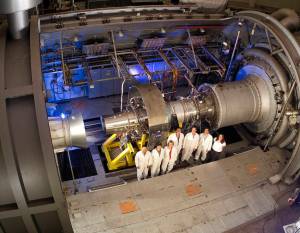As powerful jet engines emerged during the post-World War II years, the National Advisory Committee for Aeronautics (NACA) needed a facility that could accommodate testing of the full-scale engines of the future.
Excavations began in the summer of 1949 at the Lewis Flight Propulsion Laboratory (now Glenn) and by January 1951, despite the winter conditions, construction of the Propulsion Systems Laboratory No. 1 and 2 (PSL) was in full swing. Activities included the arrival and installation of the large steel castings for the two altitude test chambers. By October 1952, PSL No. 1 and 2 became fully operational.
PSL No. 1 and 2 was the nation’s most powerful facility for testing large, full-scale engines at simulated flight altitudes. Lewis researchers initially used the facility to test the new jet engines of the early 1950s and the ramjet engines that powered the Navaho and Bomarc missiles.
With the arrival of the space program, they transitioned to chemical rocket engines, including Pratt & Whitney’s renowned RL–10, which propelled the Centaur rocket. In the late 1960s, the focus returned to aero propulsion, as engineers used PSL to study complex problems such as flutter, inlet distortion and fly-by-wire control systems.
In the 1970s, the center constructed two larger test chambers, PSL No. 3 and 4, which superseded the capabilities of PSL No. 1 and 2. The final tests in the original test chambers were conducted in 1979.
Today the PSL is NASA’s only test facility that simulates true flight conditions for experimental research on aircraft engines and propulsion systems by accurately creating conditions experienced in high-speed, high-altitude flight. The facility provides data critical to understanding the performance and operability of jet engines at extreme conditions.
Robert S. Arrighi
NASA’s Glenn Research Center




























